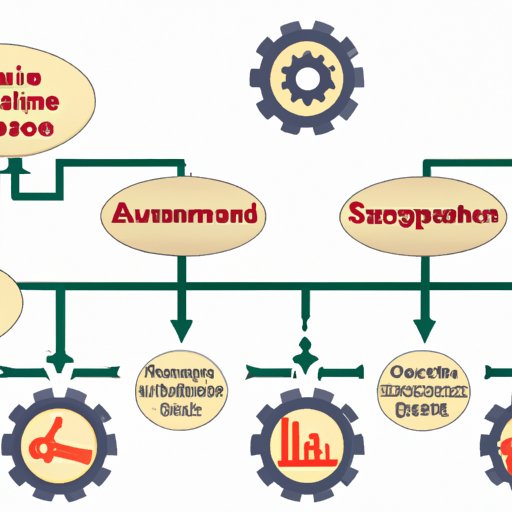Introduction
Business process automation (BPA) is an increasingly popular tool for organizations striving to optimize and improve their operations. By automating various tasks and activities, companies can streamline their processes, reduce costs, and increase efficiency. In short, BPA is the use of technology to automate activities or services that accomplish a specific function or workflow.
From customer service to marketing, there are countless opportunities for businesses to benefit from automation. According to a recent survey by McKinsey & Company, “organizations that have adopted advanced automation technologies report a 20 percent reduction in time spent on manual tasks and a 25 percent gain in productivity.”

A Comprehensive Guide to Business Process Automation
To get the most out of automation, businesses must first understand what it is and how it works. Here is a comprehensive guide to business process automation:
What Every Business Should Know About Business Process Automation
Business process automation is the use of technology to automate repetitive, manual tasks. It allows businesses to simplify and streamline processes, freeing up resources and improving efficiency. Automation can also help businesses improve accuracy and reduce errors.
Automation can be used to automate many different types of processes, from customer service to marketing. For example, businesses can use automation to automatically respond to customer inquiries, manage customer data, or send automated emails. Automation can also be used to streamline processes like payroll, accounting, or inventory management.
How to Get Started with Business Process Automation
Getting started with business process automation is relatively simple. The first step is to identify which processes in your organization can be automated. Consider which tasks are repetitive or could be done more efficiently with automation. Once you have identified the processes that can be automated, you can begin to develop a plan to implement automation.
When developing your automation plan, consider the following: What technology do you need to implement automation? How will you train staff on using the new technology? What processes will be automated first? What metrics will you use to measure the success of your automation efforts?
Implementing Business Process Automation for Maximum Efficiency
Once you have identified the processes that can be automated and developed a plan to implement automation, it’s time to start optimizing your processes for maximum efficiency. Here are some tips for streamlining your business processes through automation:
Streamlining Business Processes Through Automation
The goal of automation is to simplify and streamline processes. To achieve this, focus on automating the most time-consuming and repetitive tasks. Automation can also be used to eliminate manual steps, such as manually entering data into multiple systems.
When implementing automation, consider the impact it will have on your staff. While automation can reduce the amount of time employees spend on tedious tasks, it can also create new roles and responsibilities. Make sure your staff is trained and equipped to handle the new roles created by automation.
Measuring the Impact of Business Process Automation
To ensure your automation efforts are successful, it’s important to measure the impact of automation. Use analytics to track key metrics such as cost savings, time savings, and improved accuracy. These metrics can help you determine whether your automation efforts are having the desired effect.
You should also track customer satisfaction metrics, such as response times and customer feedback. Automation can help improve customer experience, so tracking these metrics can help you determine whether your customers are happy with the changes.
Conclusion
Business process automation is an effective way for businesses to streamline processes, reduce costs, and increase efficiency. Automation can be used to automate many different types of processes, from customer service to marketing. To get the most out of automation, businesses must first understand what it is and how it works.
When implementing automation, businesses should focus on automating the most time-consuming and repetitive tasks. They should also measure the impact of automation to ensure it is having the desired effect. With the right approach, businesses can reap the benefits of automation and maximize efficiency.
(Note: Is this article not meeting your expectations? Do you have knowledge or insights to share? Unlock new opportunities and expand your reach by joining our authors team. Click Registration to join us and share your expertise with our readers.)
